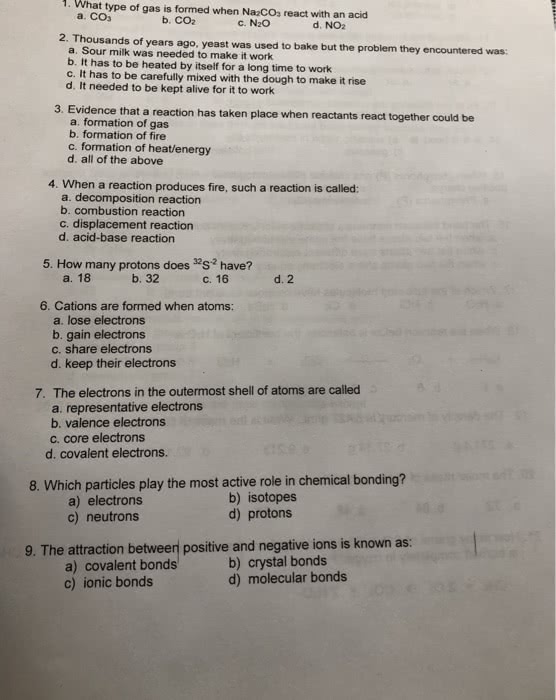CHEM1011 Lecture Notes - Lecture 7: Electron Configuration, Noble Gas, Covalent Bond

Lecture 7: Covalent bonding
Ionic bonding
- It takes energy to remove an electron from an atom
- Electrostatic attraction between cations and anions supplies energy
- Generally, do not get very highly charged ions as too much energy is required to form
them
Sharing of electrons
- In ionic compounds, a noble gas electron configuration is obtained by transfer of
electrons
- In covalent compounds, a noble gas electron configuration is obtained by sharing of
electrons
find more resources at oneclass.com
find more resources at oneclass.com

2
Hydrogen
Reasons for covalent bonding
- Electrons are shared to achieve a noble gas configuration for each atom
- Electron density between two atoms: the bond is directional (electrons are not like
Bohr’s odels- they are more like clouds)
when atoms share electrons, it is dense
need to get electron density
the angle at which an electron comes in is important, it cannot just join an atom
wherever
- only electrons from the outermost shell can be involved in bonding – valence electrons
- electrons tend to form pairs (e.g. 4 pairs in the second shell)
a’t ake a od etwee 3 atos (1 electron from each)
Valence
- valence electrons are used in bonding
- the valence of an atom is the side of the charge if it forms an ion or the number of
bonds it forms in a neutral molecule
find more resources at oneclass.com
find more resources at oneclass.com
Document Summary
It takes energy to remove an electron from an atom. Electrostatic attraction between cations and anions supplies energy. Generally, do not get very highly charged ions as too much energy is required to form them. In ionic compounds, a noble gas electron configuration is obtained by transfer of electrons. In covalent compounds, a noble gas electron configuration is obtained by sharing of electrons. Electrons are shared to achieve a noble gas configuration for each atom. Electron density between two atoms: the bond is directional (electrons are not like. When atoms share electrons, it is dense. The angle at which an electron comes in is important, it cannot just join an atom wherever. Only electrons from the outermost shell can be involved in bonding valence electrons. Electrons tend to form pairs (e. g. 4 pairs in the second shell) (cid:272)a(cid:374)"t (cid:373)ake a (cid:271)o(cid:374)d (cid:271)etwee(cid:374) 3 ato(cid:373)s (1 electron from each)









